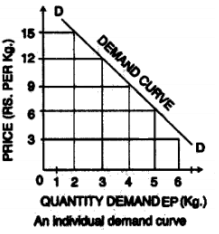Capital Formation: “Capital formation consists of both tangible assests like plants, tools and machinery and intangible Assets like high standard of education, health, scientific progress and research.”
Stages of Capital Formation:
A change in the stock of capital in any economy during any particular time period is called capital formation. The process of capital formation consists of the following steps:
1. Creation of Savings: It is the first step in the process of capital formation. It is savings which are transformed into capital. If there is no saving, there can not be any capital formation, even if all other conditions are favourable for capital formation. Savings are done by households and it depends on their income and willingness to save.
2. Mobilization of Savings: If savings are kept in the form of idle cash at home, they will not lead to capital formation. In this case, the rate of investment in the country will be low, even though the rate of saving is high. The savings must be mobilized from the savers. In a modern society, financial and other institutions as well as the capital markets perform this function. People may keep their savings in the banks or other financial institutions. They can also buy shares or bonds issued by companies.
3. Investment of Mobilized Savings: Even mobilization of savings is not sufficient for a high rate of capital formation. The mobilized savings must be actually used by producers for-the purpose of investment. For instance, the money kept by the people in the banks must be lent out by the banks to the producers who can use the money, for ex., installing new machines in their factories.
(b) According to Samuelson: “Law of demand states that people will buy more at lower prices and buy less at higher prices, (ceteris paribus) other things remaining constant.”
Demand Schedule: According to Prof. Marshall, demand schedule is a fist of prices and quantities. It is a tabular statement of price-quantity relationship between two variables.
| Price of Oranges (Rs. per kg.) |
Demand by consumer (in kg) |
| 15 |
2 |
| 12 |
3 |
| 9 |
4 |
| 6 |
5 |
| 3 |
6 |
Demand Curves: The demand curve is a graphic statement or presentation of quantities of a commodity, which will be demanded by the consumer at various possible prices at a given period of time. Demand curve does not tell us the price. It only tells us how much quantity of goods would be purchased by the consumer at various possible prices.
The demand curve will be:
